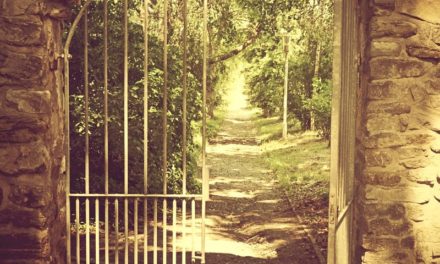If this is your first encounter with the sanctuary aspect on this website, I highly suggest you first read What’s Not Important (click on the highlighted part. Hopefully, then, the rest of the article will make more sense. What’s Not Important deals with the details recorded in the Bible, and their purpose.
Last day Christians have done themselves a great disservice when studying the sanctuary. No, I am not suggesting studying the sanctuary was the disservice, but rather the way they studied it.
Usually when considering the sanctuary the tabernacle coverings would be removed to see inside. And, for the most part, such an approach would work just fine, for the three major aspects of the Christian life (justification, sanctification, and glorification) are there portrayed.
But what is missed by removing the covering is that which identifies God’s last-day church (its birth year, the events surrounding it, and its commission).
When God communicates, His infinite mind has no need for “fluff.” When He designed this system He had the whole scope of the sanctuary in view, making every part significant, the details as well as the lack of them, the repetitions, the placements… everything. And we are to take it all seriously, if we really want to know God’s mind.[1]
We will turn to a single chapter in the Bible, Exodus 26. I hope you read this with your Bible open, because I am not going to spoon-feed you today. I’m expecting you to read the verses as we move down through the chapter.
You will notice it begins with the very part Christians (for the most part) remove to begin their study – the ceiling. It starts with the innermost covering… in ten sections. As we consider this layer we notice everything about it speaks of divine royalty: the whitened linen addressing His purity, the three royal colors, the cherubim as His willing servants—all woven together as a single fabric. Next, we note that God gave specific measurements for each curtain. All ten were four cubits wide and twenty-eight cubits long. Then He divided the ten into two groups of five curtains joined together. So now we have two sections of curtains 28 cubits long and 20 cubits wide.
Next God joins these with two sets of fifty blue loops, each set attached to the inner edges of both sections. Then when these two sets of loops are connected by golden taches (connectors), the ten curtains help unite the whole tabernacle into a single unit (verse 6).
We also notice a second curtain just above it, made solely of goat hair. This also has four cubit-wide sections, identical to the ones below it, but longer in length (thirty cubits). Another unique characteristic is that it uses eleven curtains, instead of ten, the two sections composed of six and five panels joined together. It has the same number of loops, but the material was not specified. And the taches were to be composed of brass (a composite metal man must make). Everything about this layer smacks of humanity as strongly as the inner one speaks of divinity. Goats were often used in place of lambs in sacrificial offerings. Where ten is a number often used for completion, eleven suggests an uncomfortable situation, something incomplete. And, like the linen curtains, it is considered a single unit when all joined together (verse11).
These two sets of curtains fit seamlessly into the divine/human nature of the Messiah.
As God moves among the children of men He characteristically begins in the east and moves toward the west. (Where did He plant the garden in Eden? Where was the only door into Eden’s garden as well as the courtyard? Where will He first be seen at the Second Coming? OK, you got the point.) Now look at the ninth verse. This is a key scripture rarely (if ever) used in sanctuary studies. One of those six curtains was to hang, doubled over, above the entrance into the tabernacle, seen from the courtyard. What number did God give that panel, the first, sixth, or eleventh? Remember when all joined together it was considered a single unit. Now let’s read the verse together:
Exodus 26:9 And thou shalt couple five curtains by themselves, and six curtains by themselves, and shalt double the sixth curtain in the forefront of the tabernacle.
If that is the sixth one, where is the first? [Where the brass taches are that connect it to the other 5-paneled goat-hair curtain.] In other words, God set up a COUNTDOWN to those taches! Keep this in mind as we move up one more layer to the third of the four coverings of the tabernacle: the one made of rams’ skins.
Rams are always used to denote strength, and these coverings seem to be describing different aspects of Christ’s human/divine nature. When used as offerings, only strong three-year olds (or older) were used. And here, too, we find another twist in the divine mind. God instructed the rams’ skins to be dyed red, making the color of the skins unnatural. Why change the color? If He wanted red, why not use the red heifer (another sacrificial animal)? God had His reasons! The color was to be blood-red, and the dying suggests something unexpected. You’ll see why shortly.
Colors can have strong associations.
Imagine having three children, ages two, six, and eight. You’re busy in the kitchen with an ear and eye on the children playing quietly nearby. You decide to run out to the garden to get some beets for dinner, while the little ones were absorbed in their imaginative games. When you return you see a blue puddle on the kitchen floor, with drips leading to another room. You wonder what mischief the kids got into in such a short space of time. Your thoughts immediately go into cleaning mode. But what if that puddle were yellow, green, or black? Probably not much different. But what if it were blood red, would you react the same, or would you go into panic mode? OK, now keep those feelings, for they are the ones we need to move forward.
As we look up to the ceiling we see the two beautiful linen sections pulled apart, yet held together by the blue loops and golden taches. The only part of the goat-hair curtains we can see are the plain loops and the brass taches interspersed among the others. And as we look past these loops and taches of the first two inner layers we see the rams’ skins making a blood red line from the south wall to the north.
When these coverings are put in their proper place on the tabernacle, this blood-red line actually goes up one wall, across the top, and down the other wall. Can you think of another place in the Bible when God had people put blood on something that way? It’s in Exodus 12. This was in preparation for the final judgment on Egypt, the first Passover, when the death angel would take the life of all firstborn. Those homes that had the lamb’s blood on the door posts and lintel would be safe from the tenth plague to soon follow. To say the least, there certainly was a surprise by all unbelievers, whether they were Israelites or Egyptians, even though warned ahead of time. The exodus soon followed. Centuries later, at another Passover (and judgment scene), God’s Son would become the Lamb, whose blood would save the lives of all who put their trust in Him. Was there a surprise then as well? Absolutely! Even His disciples were unprepared, though He told them clearly that He would die and be resurrected on the third day.
So far we have a countdown to something, and where the timed event begins is a blood-red line that is associated with some kind of judgment. Does this sound like God is trying to tell us something important is going to happen there… something very important?
Now let’s consider those brass taches. As we noted earlier, brass must be made by man, so is often associated with something happening on this earth. Yet we find them in the tabernacle, the type of the one in heaven. Why are they mixed in with the gold ones, and highlighted by the blood-red line in the midst of the tabernacle? The simple answer is, this event would have something to do with a judgment, a life and death issue—like our red pool in the kitchen suggested. Whatever happens at this prophesied time in heaven will have a corresponding event happening on earth, something involving a great disappointment.
So, where do we go from here? Down to the 33rd verse. Remember, we are still in Exodus 26. There we see that this spot, where the countdown ends, where those taches line up, and where the blood-red line streaks across the ceiling, places a time-stamp on the vail that separates the Holy and Most Holy compartments. This is the vail Christ passes through to complete the Covenant promise.
What is different between the east and west side of the vail? Something as different as night and day. To summarize the two rooms:
[1] The Holy Place addresses how God helps His church POPULATE into a mighty nation. She is to let her light shine in a dark world, to glorify her Father in heaven. This is the popular side, the side even the godless find pleasing in Christ’s followers, for here His children learn to love others as Christ loved them, without partiality or self-serving. This is the side where the Mother Theresas are nurtured. Here we see Joseph in Egypt and Daniel and his three faithful friends in Babylon placed in commanding positions in powerful worldly kingdoms. And here we see why huge crowds would follow Christ and Paul and Peter as they taught… and healed.
[2] But God is more interested in quality. The Covenant Seed must reflect His character in every aspect. So the Most Holy contains the Mercy Seat with the Law of the Covenant (that specifies the uniqueness of the Covenant Seed, the character of the 144,000). Here we are called to return to God’s standard for righteousness, and that is what the Most Holy is designed to accomplish. In short, the second room is to PURIFY and purge God’s church. A call to submission and obedience is always an unpopular message to self-centered hearts.
Since the vail is the door to the Most Holy, it portrays what we can expect to prepare us for entrance into God’s presence, where our Friend (and now Lord) goes to perfect His work in His seed. {To learn more about the three doors in the sanctuary, click here.] The cherubim on the vail (who are among those closest to the throne) are types of the angels in Revelation giving the final message to the world – the everlasting gospel, a call to return to worship the Creator, a judgment against false churches, and a final call to come out of them.
This will characterize God’s last-day church. The countdown will pinpoint a special time when preparation for the judgment will begin, but this will be misunderstood, for though it will be a purifying message (to test the sincerity of the professed believers), it will not be a final judgment. The church will be commissioned to give the calling out message and the Law of God will be their standard.
But what about the year? Why have a countdown if we don’t know the year? Did God also include a year in the design of the sanctuary? Yes it is there, too (1844), in the 26th chapter, hidden (as everything else) in sizes and placements and other common things! You will also see how it and Daniel 9:24-27 harmonize seamlessly. All that is really needed outside the sanctuary itself is the recorded year of Jesus’ death (AD 31). Beyond the vail we will be in the Day of Atonement, a probationary time to take seriously, for the judgment and eternity begin shortly thereafter!
God’s last church will be the one called into.





